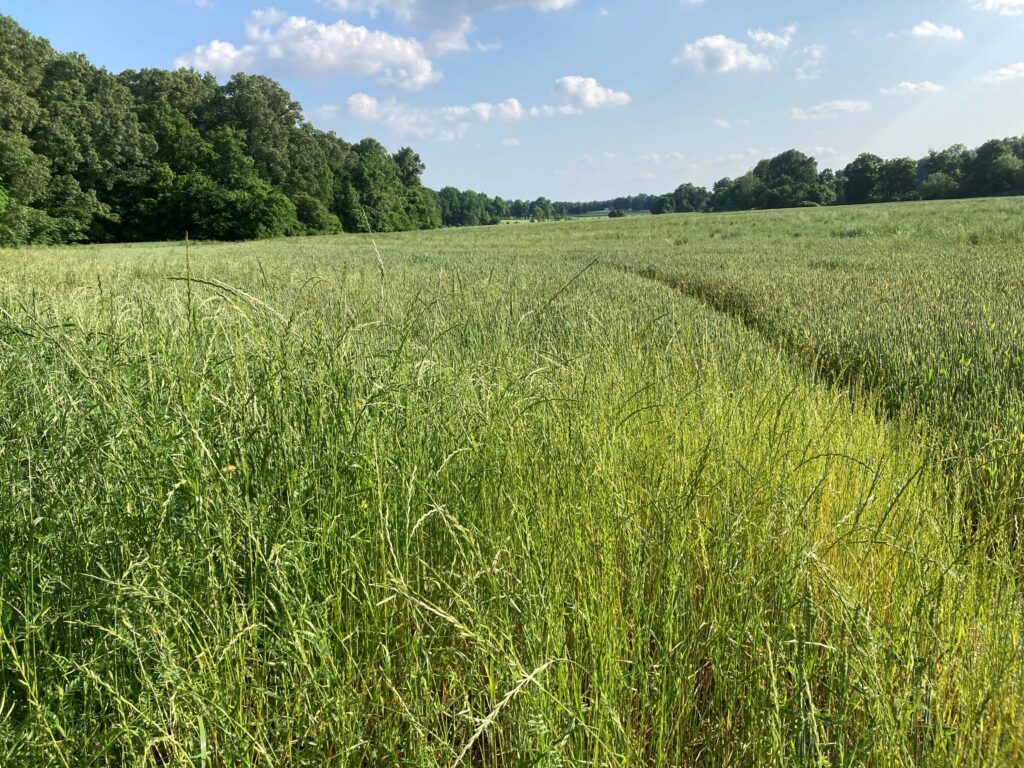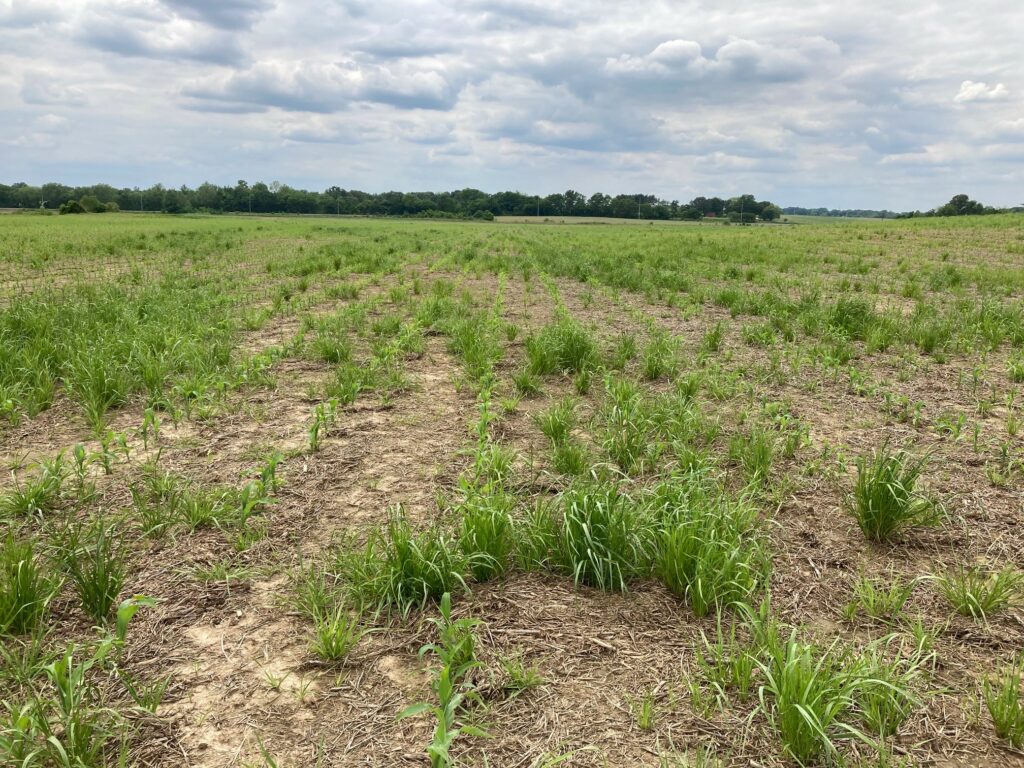

Ryegrass has moved from being an aggravation 10 years ago to a significant weed issue in our row crops. In wheat at this point, the yield loss caused by the weed has occurred (Picture 1). In cotton and soybeans, clethodim can be used now to push this weed on to maturity. In corn, there is no real solution to controlling it other than spraying the typical POST corn premix and hoping that pushes the ryegrass on to maturity (Picture 2).
The wheat fields that were consistently clean of ryegrass were those treated with either Anthem Maxx, Zidua or Axiom last fall. A good bit of the ryegrass population in the state is resistant to ALS-inhibiting herbicides which renders herbicides like Osprey, Finesse, and Powerflex harmless to ryegrass. Axial Bold has shown improved ryegrass control in spring applications over those ALS-inhibiting herbicides but it does not offer the consistent ryegrass control as those delayed PRE-applications of Anthem Maxx, Zidua or Axiom.
Johnsongrass is also a consistent problem in a good many cornfields. Glyphosate is just not providing any traction in the burndown on Johnsongrass and the POST in-crop applications are no better. Our most recent research funded by the Tennessee Corn Checkoff program has shown that Steadfast Q or Accent Q can still provide good control of Johnsongrass when glyphosate fails.

